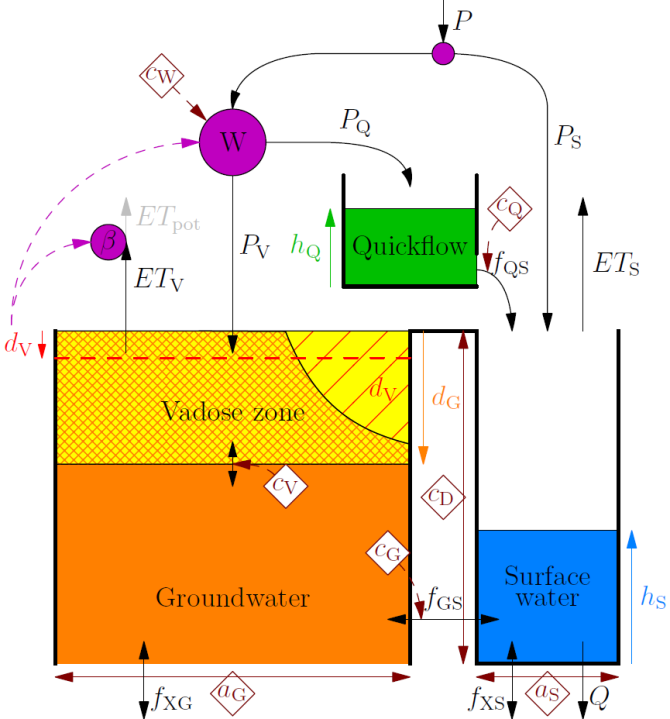WALRUS
The Wageningen Lowland Runoff Simulator (WALRUS): a lumped rainfall-runoff model for catchments with shallow groundwater.
The Wageningen Lowland Runoff Simulator (WALRUS) is a novel rainfall-runoff model to fill the gap between complex, spatially distributed models which are often used in lowland catchments and simple, parametric (conceptual) models which have mostly been developed for sloping catchments. WALRUS explicitly accounts for processes that are important in lowland areas, notably (1) groundwater-unsaturated zone coupling, (2) wetness-dependent flow routes, (3) groundwater-surface water feedbacks and (4) seepage and surface water supply. WALRUS consists of a coupled groundwater-vadose zone reservoir, a quickflow reservoir and a surface water reservoir. WALRUS is suitable for operational use because it is computationally efficient and numerically stable (achieved with a flexible time step approach). In the open source model code default relations have been implemented, leaving only four parameters which require calibration. For research purposes, these defaults can easily be changed.

Code availability and documentation
The WALRUS code is available as an R-package on GitHub. WALRUS and its first applications have been published in two peer reviewed, open access, scientific journals, a PhD thesis and a Dutch journal (listed here). To facilitate application of WALRUS, we also wrote a user manual, available from GitHub.

Acknowledgements
The development and publication of WALRUS has been financially supported by the Hydrology and Quantitative Water Management Group of Wageningen University & Research and four Dutch water authorities: Water Board Aa and Maas, Water Board De Dommel, Water Board Noorderzijlvest and Water Board Rijn and IJssel.
